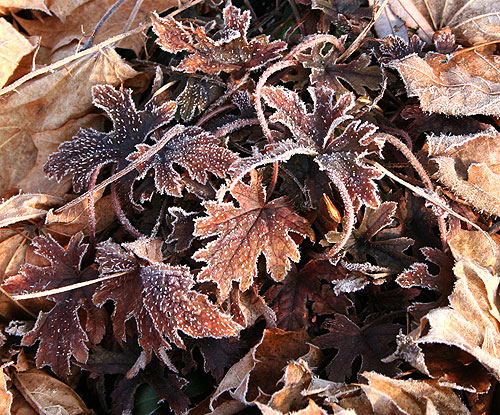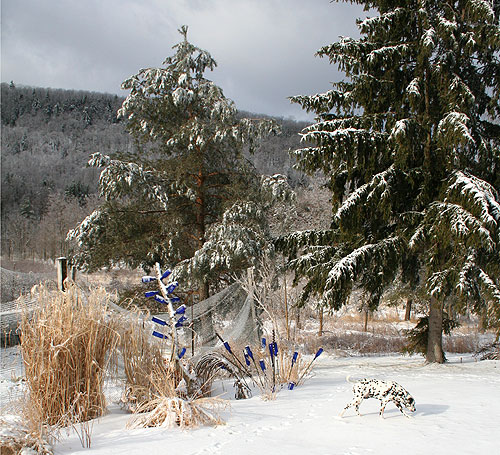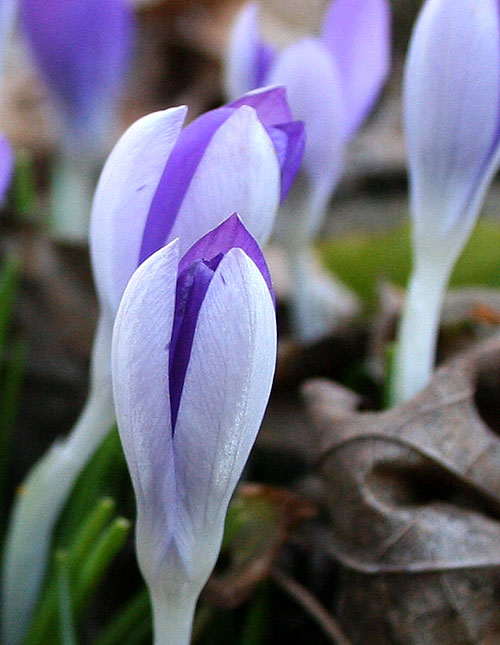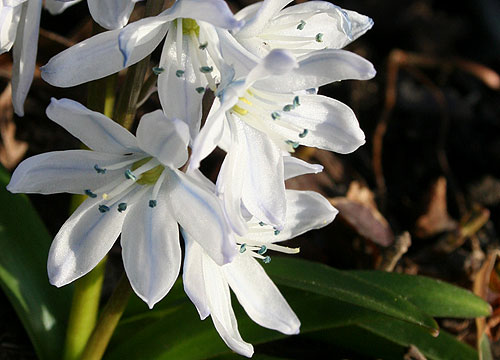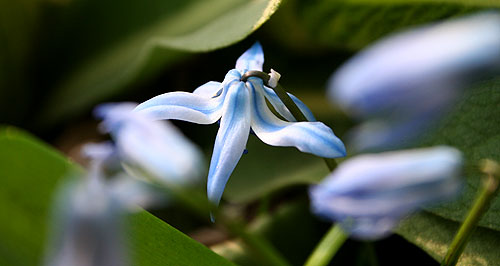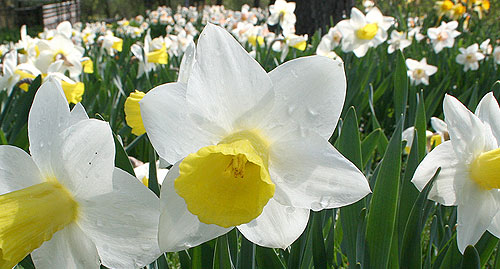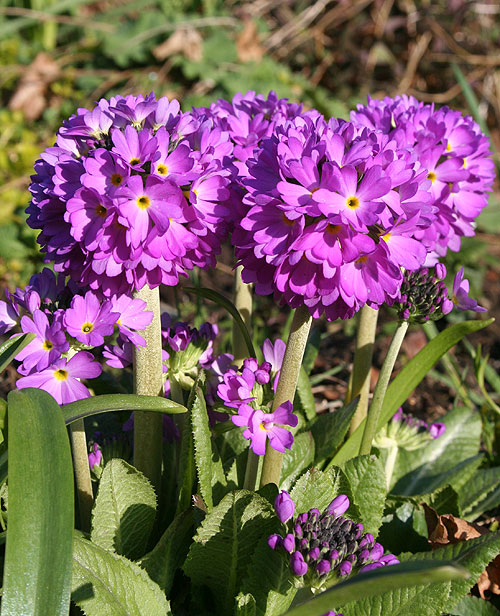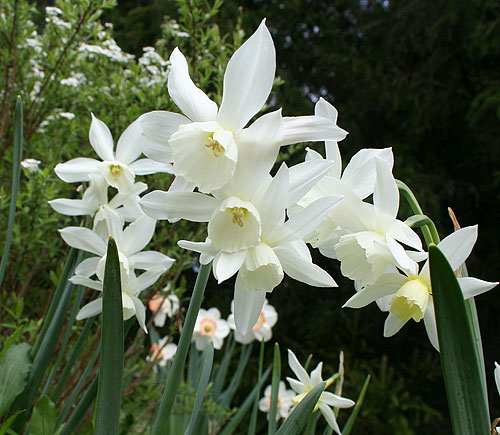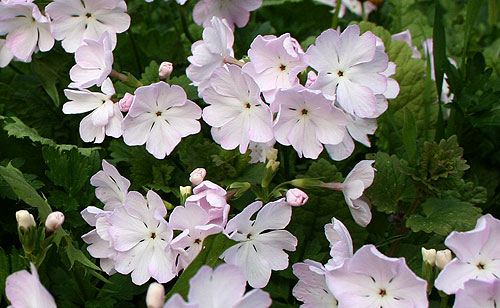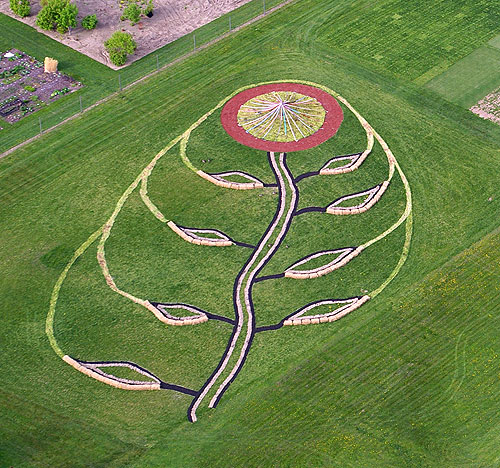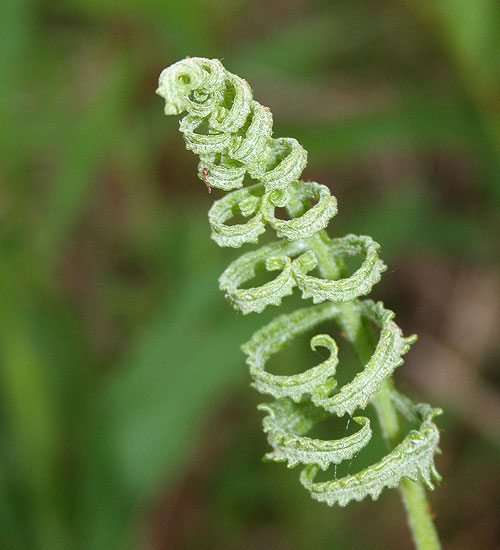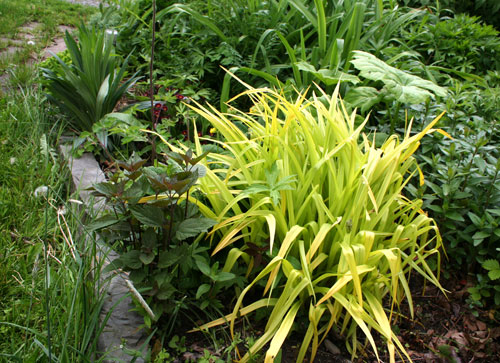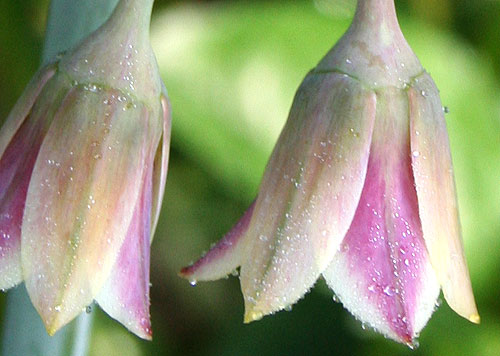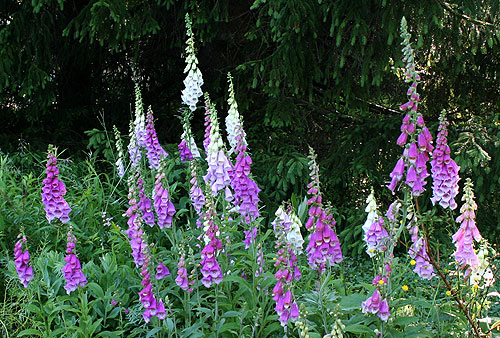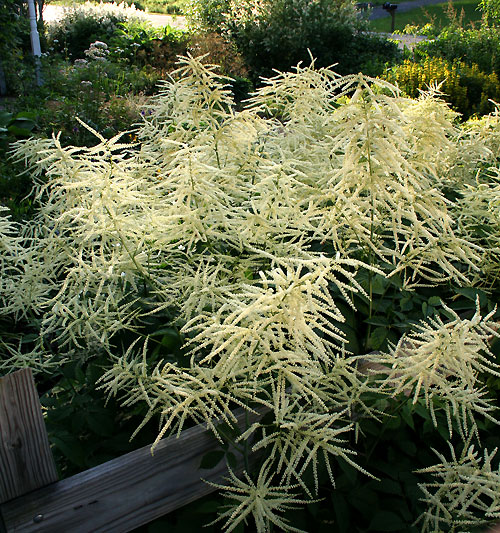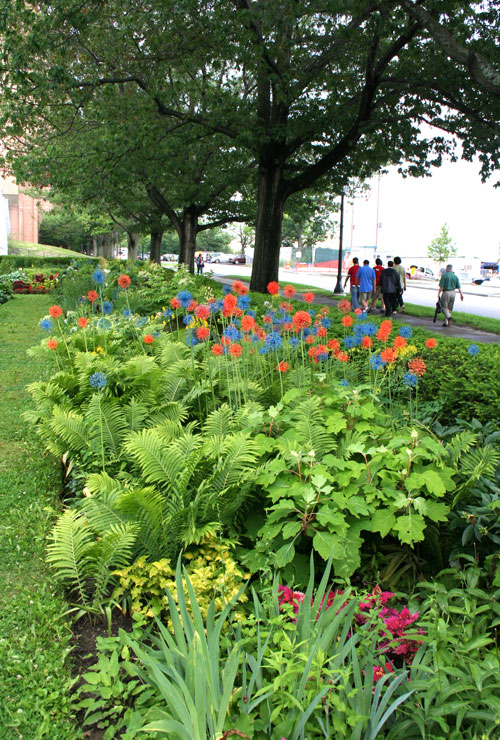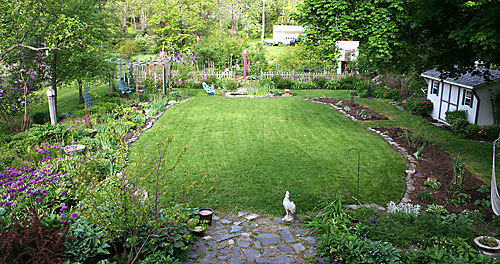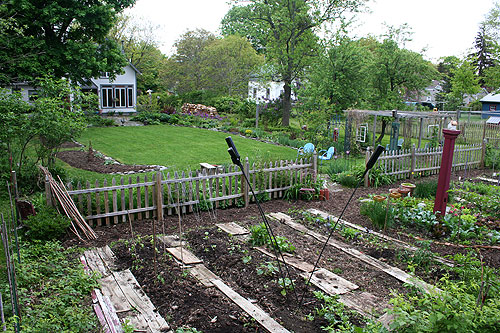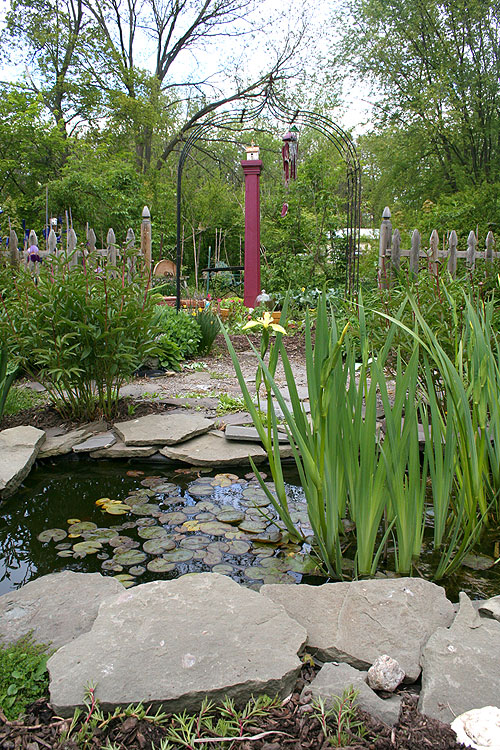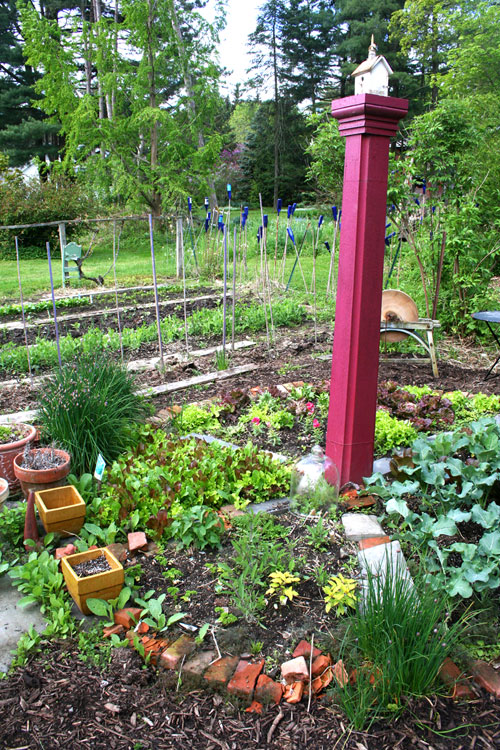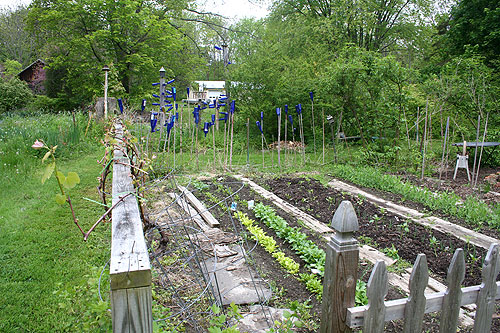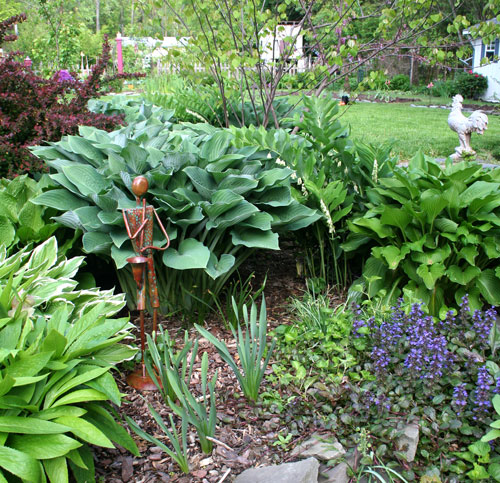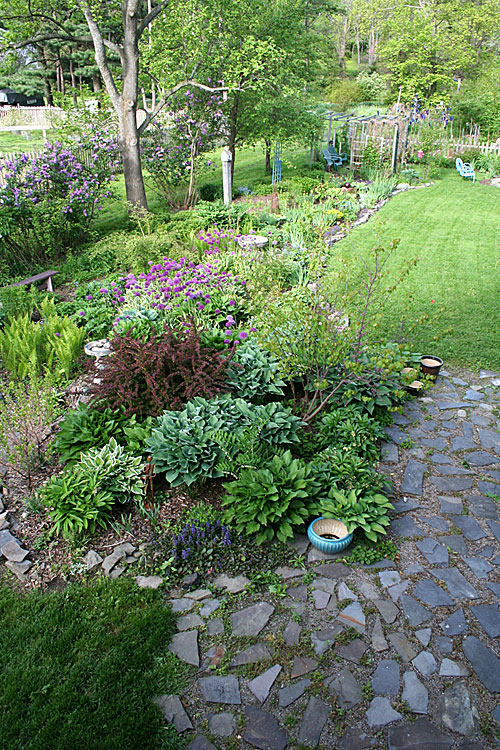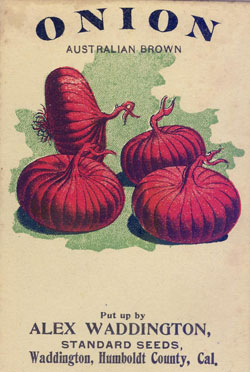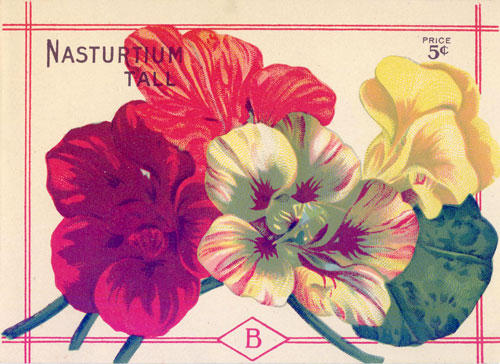The obligatory (and hopefully entertaining) look back …
January
Not much happening in the garden, so it was a good time to think about ordering seeds and plants (unfortunately, they’re more than 5 cents a pack these days, unlike these old packs) and sharing stories about the great bowling ball accident of 2003.

While there were no blooms (or scans), there was surprisingly much to photograph on a very warm January garden bloogers bloom day.
February
February is for forcing.
And time to fiddle around with PhotoShopping that month’s bloom day scans and chase away the merry blues with Manu Chao.
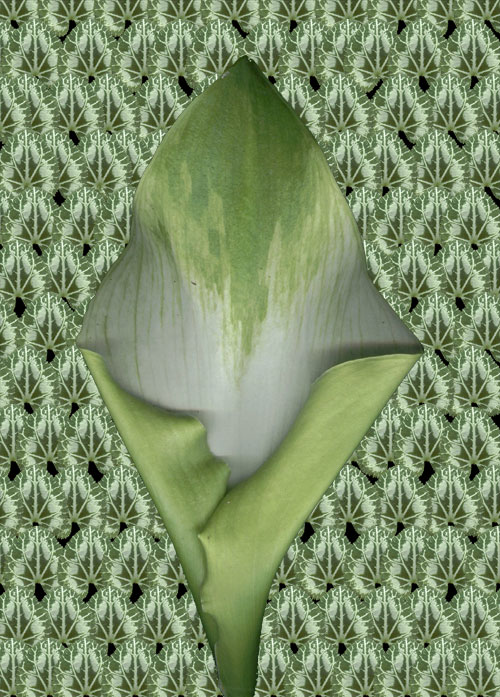
Had a sunset picture grace a CD cover.
Read and reviewed Tulipomania. Added my two cents (and a ton of pictures) to the Garden Bloggers’ Design Workshop – Color in the Garden edition.
March
I love March, if only for its excitement. There are the forced bulbs in flower …
The first of the spring ephemerals …
Then back to winter, hell and high water.
By Easter, plenty of signs that spring is on it’s way …
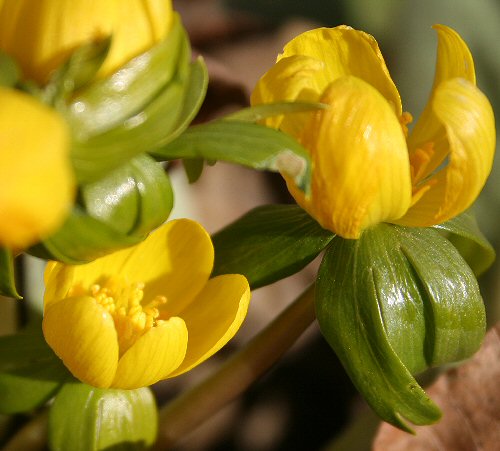
Then more snow. There’s a reason they’re called snowdrops, you know.
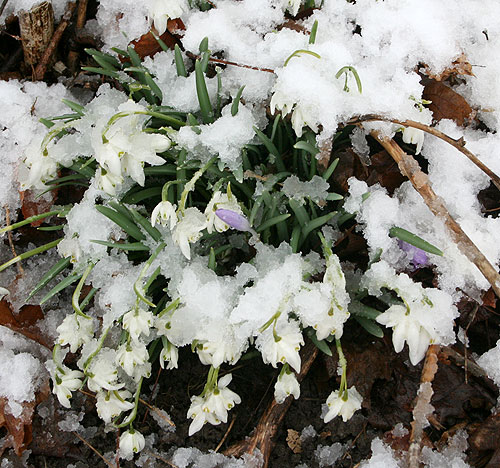
April
Speaking of snowdrops, April brought the open house at snowdrop collector Hitch Lyman’s garden.
And the spring ephemeral peak at my place. Crocus …
Hyper-spring also brings scilla …
… and erythronium.
And by the end of the month, a bazillion daffodils, these at Nina Bassuk and Peter Trowbridge’s annual open house.
May
Spring continues full bore. Purple primrose …
…an iris from Marcia’s garden …
… and many more in this bloom day scan.
In the world of art, Quilter Lisa Ellis used one of my canna images for this work of art …
… Cornell students built this Turfwork! project …
… and Durand Van Doran built this fabulous floral gate — roots and all — in Minns Garden outside the building where I work.
And we are reminded that there’s nothing new under the sun.
June
Some theme posts in June, because there’s so much to cover you’ve got to do some lumping. One on openings …
,,, another on chartreusey stuff …
… too many blooms on bloom day to fit onto one scan …
… actual bloom day pictures to go with the scans …
… and decent images of aruncus (finally!) …
… summer songs …
Mussolini was a-shavin’ whistlin’ tarantella,
Stalin was keeping eye on barbeque.
When their fish line bell started to jingle,
Mussolini caught a-nothin’, Stalin caught two.
On the art front, Cornell graduation turf art …
I tried to push back on the bland reporting on leaf casts in the garden media, and reported on the infamous Memorial Day jello contest.
As we head into the second half of the year, these alliums in Minns Garden outside the building where I work are all ready for 4th of July fireworks.

